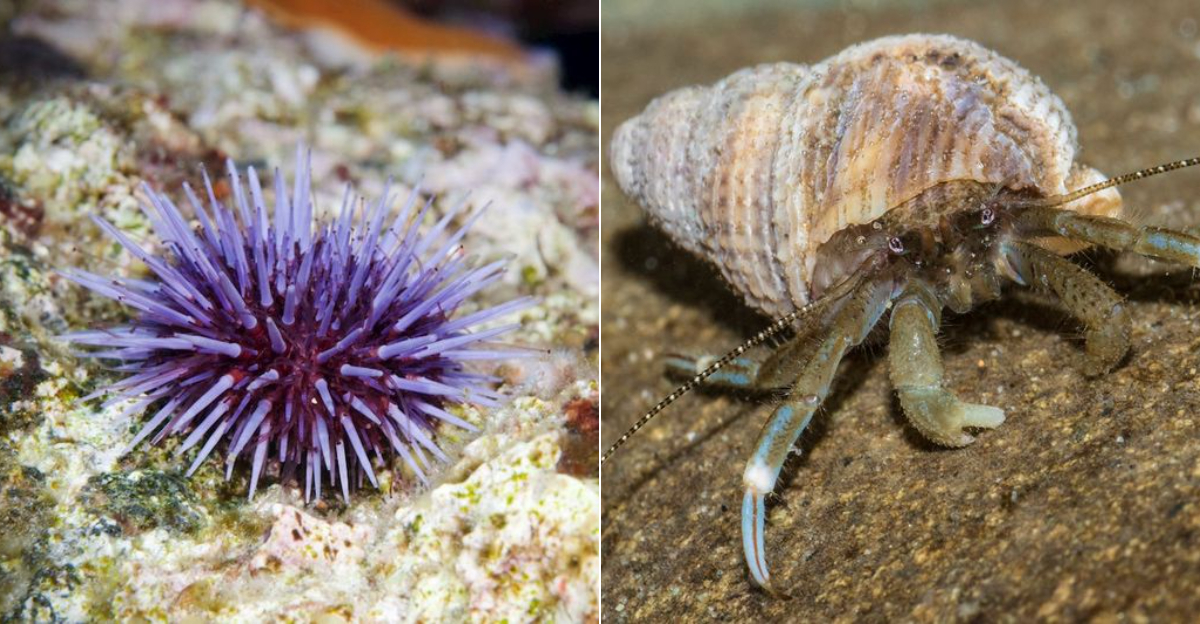The Central Coast of California offers some of the most fascinating tide pool ecosystems in the world.
I’ve spent countless hours exploring these magical underwater worlds, where the ocean temporarily retreats to reveal nature’s aquarium.
From colorful sea stars to elusive octopuses, these resilient creatures have adapted to survive in harsh conditions where land meets sea.
1. Sea Stars (Starfish) – Pismo Beach, Moonstone Beach (Cambria)
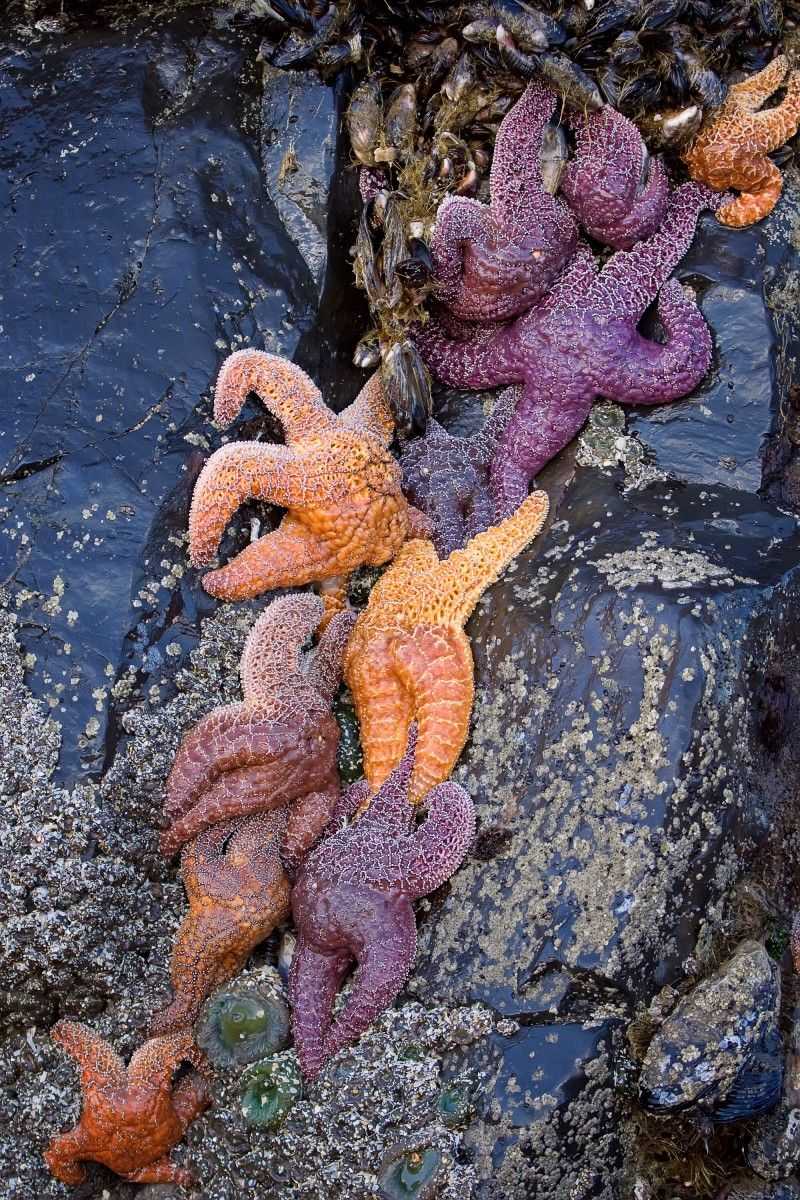
Growing up, I always called these creatures starfish, but marine biologists prefer “sea stars” since they’re not actually fish!
These five-armed wonders come in oranges, purples, and reds.
At Pismo Beach during low tide, I’ve spotted dozens clinging to rocks. They move using hundreds of tiny tube feet underneath their arms and can regenerate limbs if damaged. Pretty cool survival skill!
Moonstone Beach in Cambria offers excellent viewing opportunities too. Just remember – never remove sea stars from their habitat, as they’re crucial for maintaining tide pool balance.
2. Anemones – San Simeon State Park, Gaviota State Beach
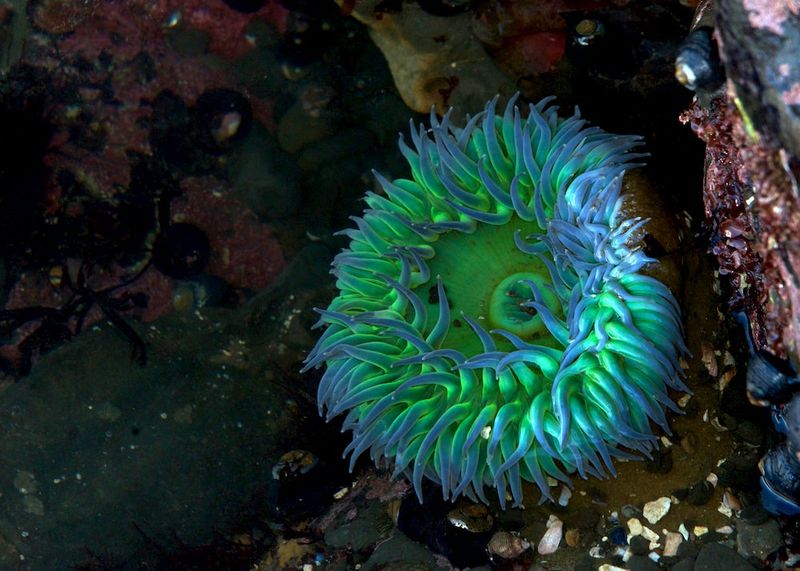
Anemones might look like underwater flowers, but don’t be fooled – they’re predatory animals!
Their tentacles contain stinging cells that paralyze small fish and crustaceans unlucky enough to swim too close.
San Simeon State Park hosts colonies of green anemones that close up when touched, a defensive reaction I discovered (gently) as a curious kid.
When submerged, they open into beautiful, flowing forms.
Gaviota State Beach features impressive aggregated anemones that cluster together in colorful groups. The best viewing times are during negative low tides.
3. Sea Lice – Pismo Beach, Avila Beach
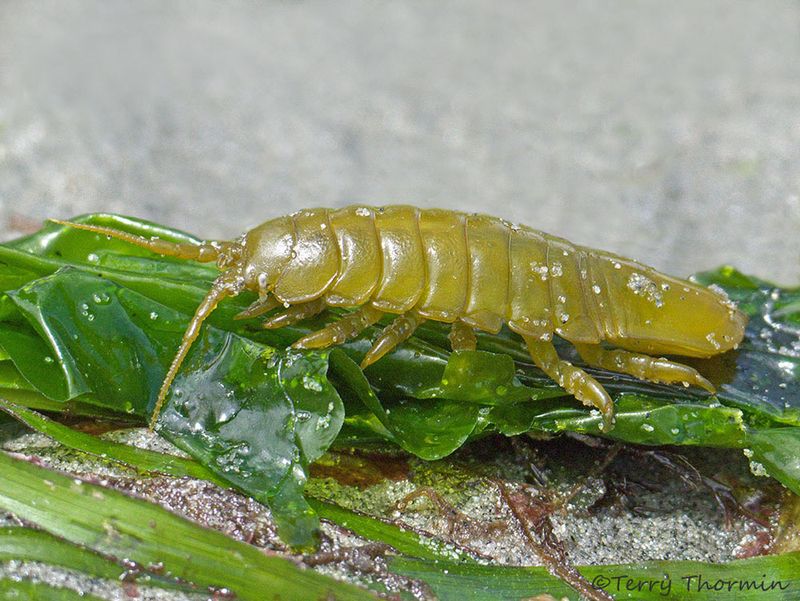
Don’t let the name trick you! “Sea lice” in tide pools usually refers to small isopods or amphipods – tiny crustaceans that scurry around rocks and seaweed. These fascinating little creatures are nature’s clean-up crew.
They’re lightning-fast and can be tricky to spot unless you sit quietly and observe.
Avila Beach’s protected coves create perfect habitats for these miniature recyclers.
Look for them among piles of seaweed or under small rocks – just be sure to replace any rocks exactly as you found them!
4. Hermit Crabs – Morro Bay, Pismo Beach
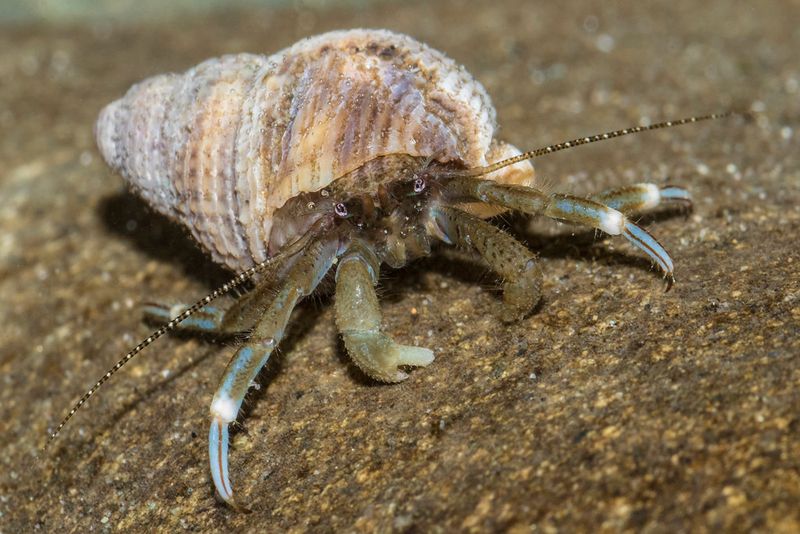
Hermit crabs are the ultimate recyclers of the tide pool world!
Unlike true crabs, these resourceful creatures lack a hard shell to protect their soft abdomens, so they occupy abandoned snail shells instead.
Pismo Beach offers excellent hermit crab viewing, especially in protected pools with sandy bottoms. Look for what appears to be a “walking shell” – that’s your hermit crab on the move, carrying its borrowed home along for protection.
5. Mussels – Montana De Oro State Park, Point Lobos State Reserve

The humble mussel might not seem exciting at first glance, but these bivalves are engineering marvels! They anchor themselves to rocks using incredibly strong protein threads called byssal threads – so strong that scientists study them to develop new adhesives.
Montana de Oro State Park showcases impressive mussel beds that create habitat for countless other creatures.
During a recent visit, I noticed how they form living fortresses against the crashing waves.
Point Lobos State Reserve offers spectacular mussel viewing along its rocky shores.
6. Barnacles – Carmel River State Beach, Pismo Beach
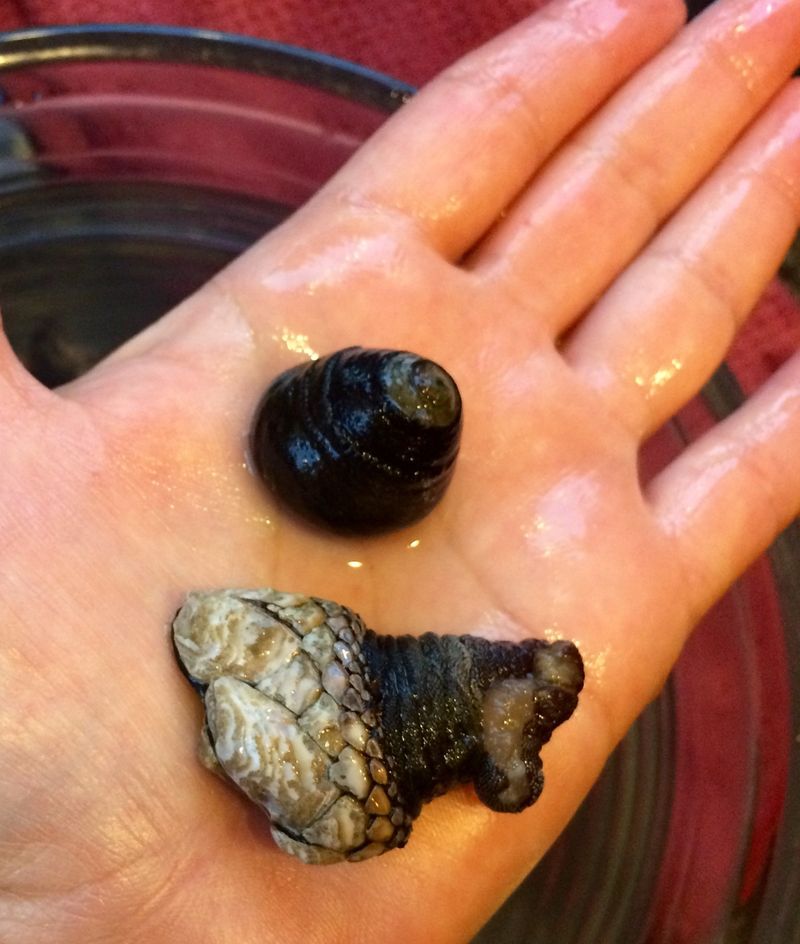
Barnacles, or the superglue champions of the natural world!
Carmel River State Beach features rocks absolutely covered in barnacles. When submerged, they extend feathery appendages to filter-feed, creating an underwater ballet I could watch for hours.
At Pismo Beach, the barnacle zones are clearly visible as whitish crusts on exposed rocks. What many people don’t realize is that barnacles are actually related to crabs and lobsters. They just live their adult lives standing on their heads inside limestone cones!
7. California Mussels – Abalone Cove, Monterey Bay
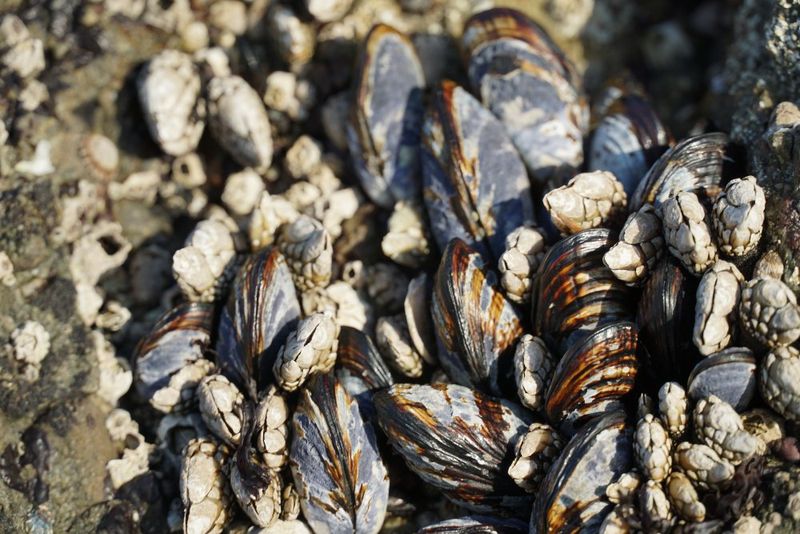
California mussels deserve their own special mention! These native shellfish can grow much larger than their Mediterranean cousins. Their blue-black shells have sustained coastal indigenous peoples for thousands of years.
Abalone Cove hosts some impressive specimens clinging to wave-battered rocks. The mussels create miniature ecosystems, with their crevices providing shelter for smaller creatures like limpets and juvenile crabs.
Monterey Bay’s mussel populations face challenges from warming waters and ocean acidification. During my last visit, a marine biologist explained how these mussels serve as important indicator species for ocean health.
8. Snails – Cambria, McAbee Beach

The snails inhabiting Central Coast tide pools showcase nature’s artistic flair with their intricately patterned shells. Turban snails, with their spiral tops, slowly graze on algae covering the rocks – nature’s patient gardeners.
Cambria’s protected coves host diverse snail species.
McAbee Beach in Monterey features abundant black turban snails and colorful lined shore snails. Watch carefully and you might witness their specialized radula – a tongue-like organ covered with tiny teeth – scraping algae from rocks, leaving distinctive trails that look like miniature roadways across the stones.
9. Sea Urchins – San Simeon State Park, Monterey Bay
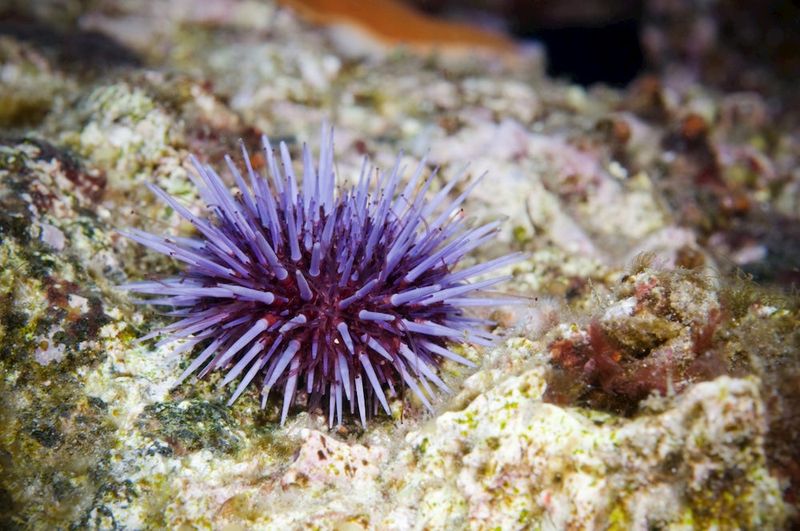
Sea urchins look like living pincushions with their ball-shaped bodies covered in protective spines!
San Simeon State Park features purple sea urchins tucked into rocky crevices. Their spines move independently, allowing them to wedge into protective spots. What looks like simple creatures are actually complex animals with five-part jaws called “Aristotle’s lantern.”
Monterey Bay hosts both purple and red sea urchins. Unfortunately, warming waters have contributed to “urchin barrens” in some areas – underwater deserts where too many urchins have overgrazed kelp forests. Healthy tide pool ecosystems maintain the perfect balance.
10. Crabs (Shore Crabs and Spider Crabs) – Moonstone Beach, Pismo Beach
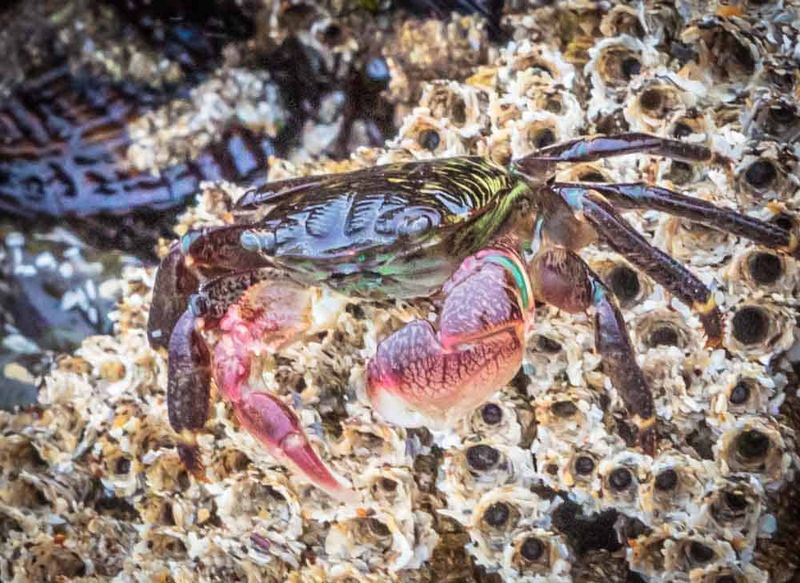
Spotting a scuttling crab is always a tide pool highlight!
Shore crabs dart sideways into hiding spots when disturbed, while decorator spider crabs move slowly, camouflaged with bits of algae and debris attached to their shells.
Pismo Beach features both shore crabs and the occasional spider crab in deeper pools. Look for their distinctive tracks in wet sand – little dotted patterns that reveal their sideways walking style. The best viewing happens during early morning low tides when fewer visitors have disturbed the pools.
11. Sea Cucumbers – Carmel-By-The-Sea, Point Lobos State Reserve
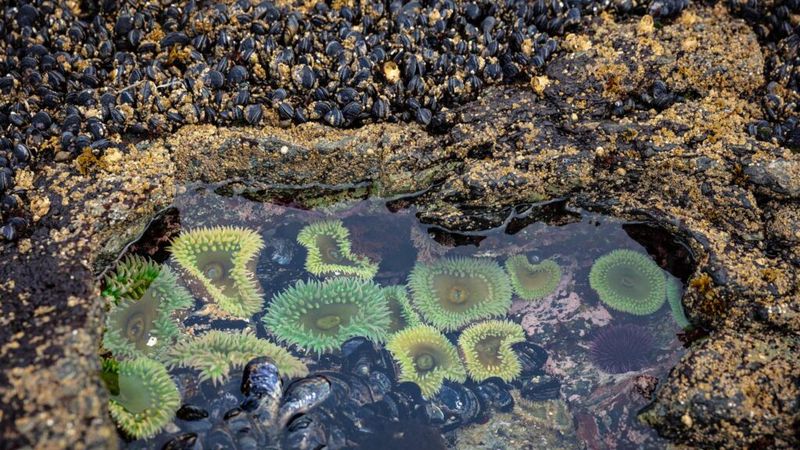
Sea cucumbers are fascinating echinoderms with remarkable defensive mechanisms! When threatened, some species can expel their internal organs (which later regenerate) to distract predators. Truly fascinating!
Carmel-by-the-Sea’s rocky shores harbor California sea cucumbers in deeper tide pools. Their bodies come in shades of red, orange, and brown, with tiny tube feet similar to their sea star cousins.
Point Lobos State Reserve offers excellent viewing opportunities during very low tides. I once watched a sea cucumber slowly extend its feathery feeding tentacles to capture plankton – a surprisingly elegant process for such an oddly shaped creature.
Their important role as detritus feeders helps keep tide pool ecosystems clean.
12. Octopuses – Monterey Bay, San Luis Obispo
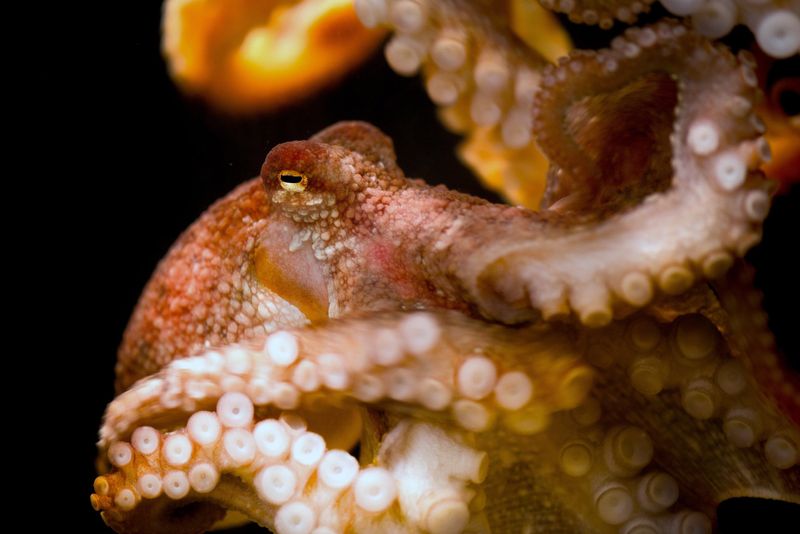
These intelligent cephalopods are masters of disguise.
Monterey Bay occasionally rewards patient observers with glimpses of small Pacific red octopuses in deeper pools. During a guided tide pool walk, our naturalist pointed out what looked like a reddish rock – until it suddenly shifted and revealed eight arms!
San Luis Obispo’s coastal areas sometimes host these elusive creatures. Octopuses prefer secluded spots under ledges or in crevices, emerging mainly to hunt crabs and small shellfish. Their problem-solving abilities and curiosity make them the undisputed geniuses of the tide pool world.
13. Flatworms – Gaviota State Beach, Moss Landing State Beach
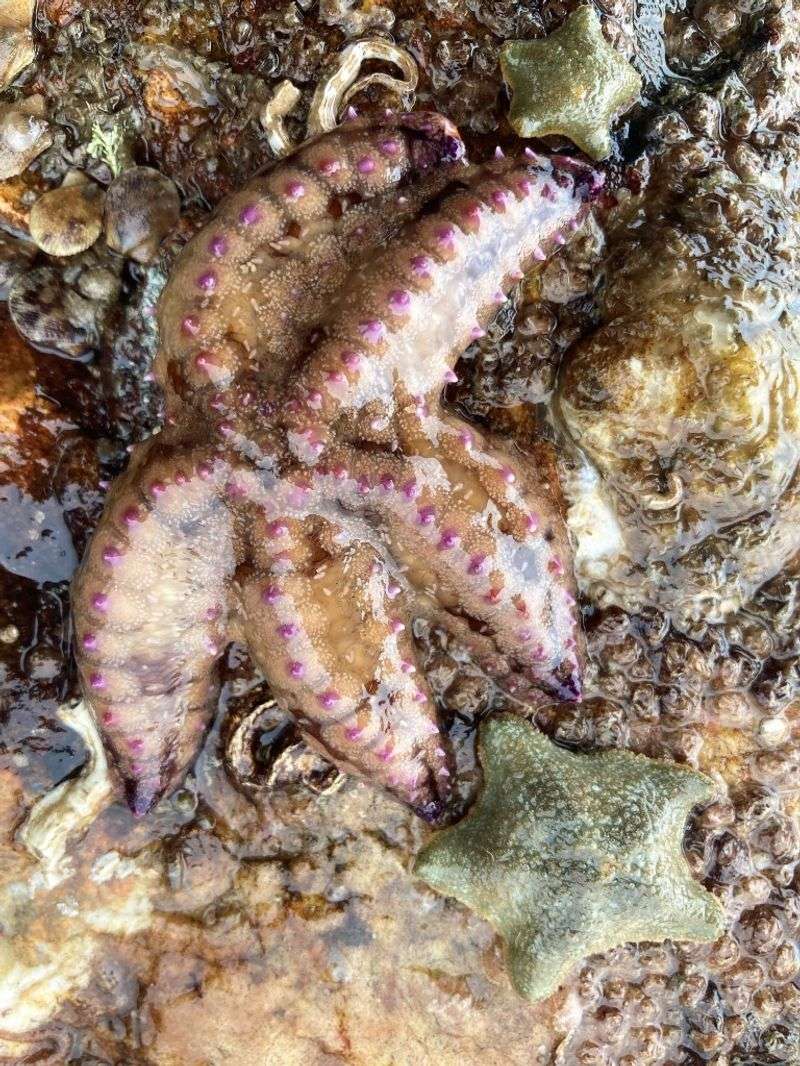
Flatworms might not make the cover of nature magazines, but these delicate, ribbon-like creatures are tide pool treasures!
Gaviota State Beach hosts several species that glide gracefully over rocks using microscopic cilia (tiny hair-like projections).
During a recent low tide, I spotted a brilliant orange flatworm that seemed to flow like living stained glass across a rock surface.
Moss Landing State Beach features these underappreciated animals in protected pools. Despite their simple appearance, flatworms possess remarkable regenerative abilities – some species can regrow their entire body from just a small fragment.
